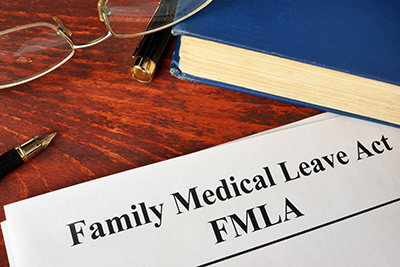When an employee is injured on the job, the federal Family and Medical Leave Act (FMLA) or the state-specific leave statutes may confer benefits in addition to what a state’s worker’s compensation provides. Employers subject to the FMLA should consider how the law interacts with their state’s worker’s comp law when FMLA-eligible employees need time off from work or modified duty after a work-related injury.
Return to Work Under Worker’s Comp
Many employers contract with an insurance carrier to provide injured employees with worker’s comp benefits. When your workers are injured on the job, however, you shouldn’t take an entirely hands-off approach to worker’s comp.
In Wisconsin for example, injured employees may be entitled to temporary disability benefits during the period between the injury and the end of healing. During the healing period, if an employee’s doctor allows her to return to work with restrictions, the employer frequently accommodates the changes unless it has reasonable cause not to do so.
Once the end of healing is reached, an employee may be entitled to a permanent disability benefit. If she is then assigned permanent work restrictions, you should again accommodate her unless you have reasonable cause not to do so.
Accommodations could include providing entirely different work duties to an injured employee, both during and after the healing period. For example, a machine operator whose back injury led her doctor to restrict her from lifting more than 10 pounds and standing in excess of two hours per day may be assigned to light-duty desk work if it’s available.
After the machine operator finishes healing, she may still have work restrictions that keep her from performing her preinjury duties. The employer must consider its accommodation obligations under the applicable worker’s comp act as well as federal, state, and local fair employment laws such as the Americans with Disabilities Act (ADA) and state law equivalents. The accommodations may include modifying the employee’s role or developing a new one she can safely do, even if it’s entirely different from her preinjury job.
Return to Work Under FMLA
The FMLA applies to most employers with 50 or more employees. If you are covered by the federal FMLA, so are your employees who have been on the job for at least 12 months and have worked at least 1,250 hours in the last 12 months. Many of the state-specific FMLA statutes have similar requirements.
When an FMLA-eligible employee sustains a work-related injury, she may need time off from work. The Act, as many know, entitles eligible workers to job-protected leave. That is, if an employee is able to return to her preinjury role after the FMLA leave, the employer must place her in the same role she held before the injury or in a role that’s “substantially similar.” Of course, the above is true only if the worker is released without restriction during the FMLA period or upon its expiration. You aren’t bound to hold a position open indefinitely after the leave is exhausted and reasonable accommodation efforts have been unsuccessful.
“Substantially similar” includes more than pay and benefits. It also requires similarity of job duties and responsibilities. Consider a teacher who sustains a concussion at work. Once the doctor releases her to return to work without restriction, and if she is still covered by the FMLA, the Act compels the employer to place her back in the preinjury teaching job, if it’s still available, or another similar teaching position.
Keeping the teacher on the payroll but making her a teacher’s aide or an administrative assistant might not be considered placing her in a “substantially similar” role because those roles wouldn’t involve teaching, supervising aides, creating curricula, or conducting parent-teacher conferences, for example. If the new job also paid less, and the teacher files an administrative complaint against the employer, it could be found liable for lost wages and benefits as well as the teacher’s attorneys’ fees.
If the employer in the above example protected the employee’s wages, she may still file an administrative complaint against the employer for violating the FMLA. Even if no back pay relief is ultimately required, the employer would incur expense and inconvenience in defending against the complaint.
Compare and Contrast
Worker’s comp and the FMLA complement each other: The former provides income to an injured worker, and the latter protects her right to resume employment after the leave period. Especially when both apply, the return-to-work period must be handled with care.
After a worker is released to full-duty work without restriction, returning her to a position that’s essentially a demotion or a transfer (compared to her pre-injury role) may violate the FMLA, even though it’s acceptable under many worker’s comp regimes. In fact, it could be a violation even if the worker didn’t apply for FMLA leave or explicitly invoke her rights under the Act because she need not use magic words to enjoy its protection.
Bottom Line
If the FMLA applies to an employee and her work-related injury or condition, she has the right to a job-protected period of leave even while receiving worker’s comp payments during the leave. Failing to recognize concurrent application of the FMLA and worker’s comp opens you up to administrative complaints and lawsuits.
Lili C. Behm is a senior associate in the litigation practice group at Axley Brynelson, LLP, in Madison, Wisconsin. She can be reached at lbehm@axley.com.

